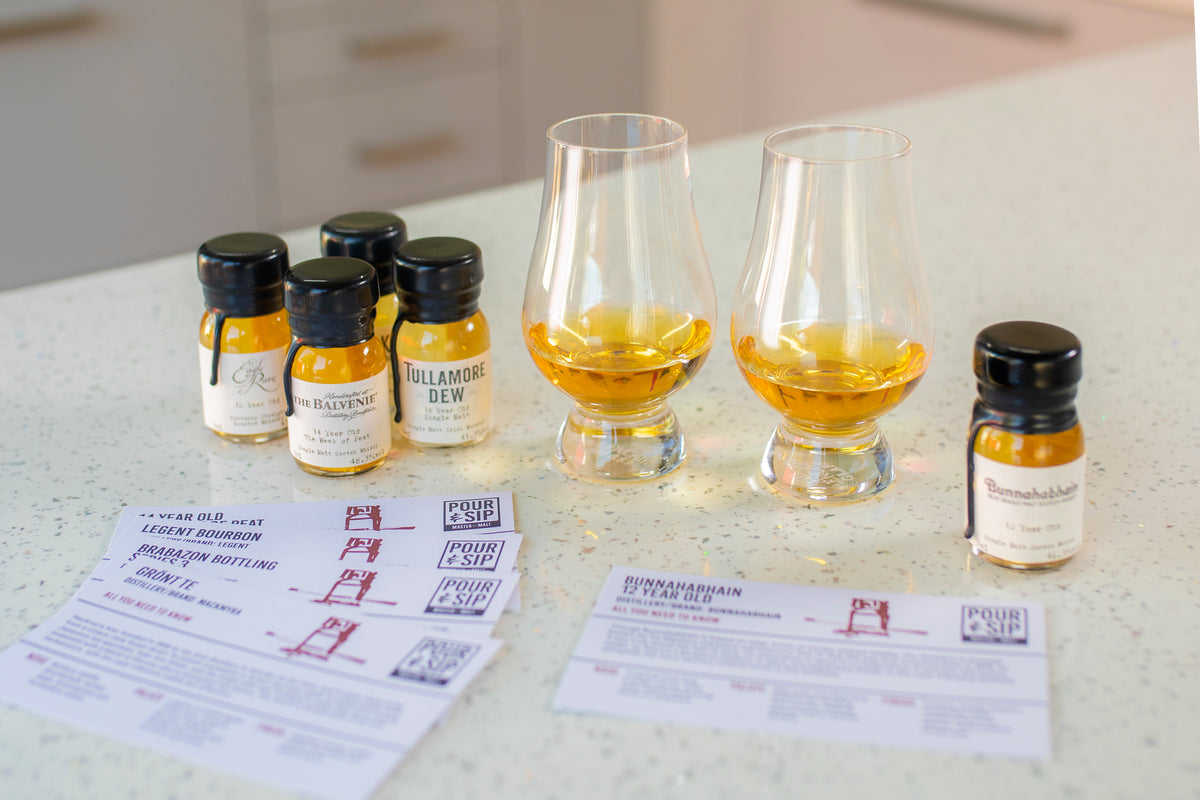Let’s simplify some whisky definitions!

Whisky lingo can be intimidating. But fear not! Understanding just a handful of terms will help you navigate flavour and production with ease. We’ve given some straightforward explanations for the terms you’re most likely to find on whisky bottles. Bookmark this page for the next time you pour a dram!
Legal requirements for whisky
First off, let’s talk about what legally makes whisky, whisky. The spirit must have been matured in wood for at least three years, and bottled at a minimum of 40% ABV. Of course it can be matured for longer or bottled at a higher strength, those are just the minimum requirements.
Whisky vs whiskey
You’ve probably seen these two spellings kicking about. There’s no hard and fast rule for this one, but there is a general distinction: If it’s Irish or American, it’s whiskey, and anything else (Japanese, Canadian, Indian, the list goes on) we’d call whisky. There are always exceptions to the rule though, so keep an eye out!
Single malt
A single malt is a whisky distilled from malted barley at one distillery, but can be produced anywhere in the world – not just Scotland!
Single grain
This is just like a single malt, but rather than malted barley, it’s produced with other grains like wheat or corn, and they’re not malted.
Blended malt
Think of this as a blend of single malts from different distilleries.
Blended whisky
If it’s simply a blended whisky you’ve got, then it’s a blend of malt and grain whiskies from more than one distillery.
Different grains
If it’s not a malt, there are loads of grains that you can find in a whisky. The most common are wheat, corn, rye and unmalted barley.
Pot still
Pot stills don’t just distil whisky, but all sorts of spirits. It’s a beautiful (usually) copper contraption, with a round base and a neck. Vapour is heated at the base, and travels up the neck and along the lyne arm, where it condenses and new make is collected! Often, spirits are distilled two or three times in a pot still, the latter yielding a higher concentration of alcohol.
Column still
A column still produces spirits to a much higher ABV than a pot still, and is generally used to distil grain whisky and bourbon. They’re much taller and straighter than pot stills, and usually produce a more neutral spirit. While pot stills work in batches, column stills can run continuously.
Bourbon
Bourbon has to be distilled and aged in the US, with at least 51% corn in its mash bill (see below). It also has to be matured in new oak casks, whereas Scotch whisky is often matured in casks which have held other spirits first.
Peat
Peat is what gives some whiskies a smoky flavour. Peat itself is just partly decomposed vegetation – not glamorous at all. Whisky is peated at the very beginning of the process when the barley is dried. Sometimes distilleries burn peat to do so, giving it a smoky flavour. Originally this originated wherever peat was found in abundance, such as Islay in Scotland, but now peat is transported to wherever wants to peat its whisky.
Cask maturation
We’ve covered bourbon for this one, but generally whisky is matured in oak. Sometimes you’ll get other varieties of wood like chestnut or mizunara (particularly for Japanese whiskies). The most common cask seasonings you’ll find are generally sherry and bourbon, though casks which have previously held Port, brandy, wine, beer and even Tequila have been used!
Cask strength
This is whisky that hasn’t been diluted with water before bottling, and is the exact ABV that it came out of the cask at. Depending on the temperature of where it was matured, the ABV can go up or down while the spirit is ageing. In Scotland, where it’s generally cooler, it decreases, whereas in Australia where it’s hotter, it can increase.
Angel’s share
Because wooden barrels are porous, throughout the ageing process some of the spirit evaporates. The amount that is lost is called the angel’s share, which is generally greater the hotter and drier the climate.
Chill filtration
This is generally used for whiskies that are bottled below 46% ABV. The whisky is cooled so that fats within the spirit solidify. It’s then filtered to remove these fats, and is done to prevent whisky from going cloudy when it gets cold or has water added to it. Not all distilleries chill filter whisky, and you can often find out simply from the label.
Mash bill
This is a term used for American whiskey, describing the proportions of each grain that is used in an expression’s recipe.
Hopefully that clears some things up. Now you can go forth and conquer the whisky world, full of brand new knowledge! As always, if you have any questions then please put them forward on our social media channels – we love to geek out!
Happy sipping!



